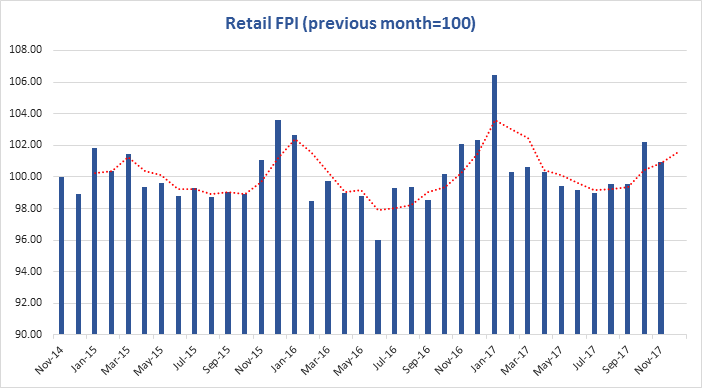Indexes
 27
November
2017
27
November
2017

 27
November
2017
27
November
2017
In the last two weeks of November, ISET’s Retail Food Price Index showed a significant, 10.8% y/y increase (compared to November 2016). On a monthly basis (compared to October 2017), food prices in Tbilisi’s major supermarkets increased slightly by 0.9%. We recorded the biggest bi-weekly price increases for eggplant (41.2%), cucumbers (20.5%), and onions (16.3%). Prices dropped the most for tangerines (-8%), garlic (-3.2%), and carrots (2%).
In the last three years, food prices in Tbilisi’s retail markets have been stable. Monthly inflation was minimal in July 2016 (-4%), and hit its maximum in January 2017 (6%). In the remaining months, food prices have been fluctuating at around 3%.

Taking November 2014 - October 2015 as a base year, it is noticeable that food prices decreased from January 2016 to November 2017. From that point forward, food prices have been increasing. In November 2017, Retail FPI is the highest compared to the same month in previous years (November 2016, November 2015, November 2014). This might be a signal of further price increases, especially with New Year coming soon.
Looked at from an annual perspective (November 2017 vs. November 2016), on average, Tbilisi’s retail markets experienced significant annual price increases in the five food categories comprising the Retail FPI: fruits (3%), grocery (3%), non-alcoholic beverages (6%), meat (9%), and dairy products (16%). However, vegetables are 18% cheaper on average compared to the previous year. Given the upcoming skiing season and the fact that Georgia is rich with skiing resorts, the number of tourists might increase; this, in turn, might put additional upward pressure on food prices.





